Types Of Bird Nests
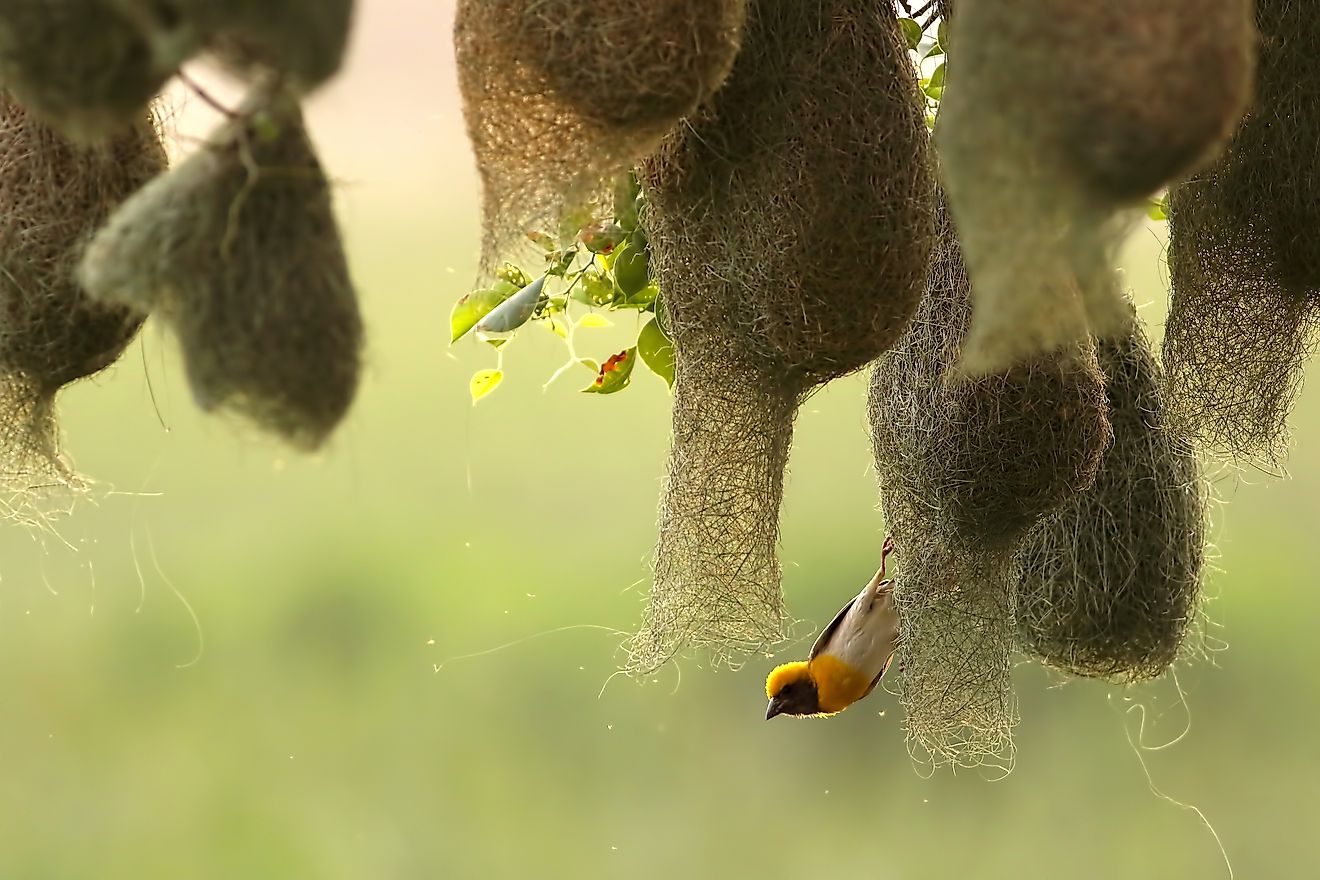
- Deep lining in nests minimizes conductive heat loss, while a smaller circumference on the inside minimizes conventional cooling.
- One can often find large water species resting on the platform nests in the shallow areas of water.
- Most nest-infesting ticks are blood-suckers, however, there are some who clean up the dirt, or prefer to feed on other blood-sucking ticks.
Nests come in all shapes and sizes. From impromptu nests to extravagantly constructed ones, birds build their homes for safe-keeping their eggs and litter at an optimal temperature, as well as to keep warm during the winter months. Nests are also used as a protection from predators, and may be strategically camouflaged, hidden, or inaccessible to others. Fashioned out of different materials, from the standard leaves and twigs to random scraps, and insulated with saliva and mud, birds build nests in accordance to their environment, need and ability. Some species take over nests built by other species, usually after those have become abandoned. There are many more unique nesting habits, including facing the nest to the north, or nesting in the cacti trunk. This is the list of the most common types of nests one will find in the environments similar to North America's.
Since bird nest photography is a subject of debate, we have not
Scrape Nests
Shorebirds, gulls, terns, nighthawks, and vultures, among others, build simple scrape nests right on the ground surface, using leaves, branches and dirt scraps. These simple nests are effective in their versatility, as they can be built out of limited wet and dry materials, sized and lined accordingly for their purpose. The deeper the lining, the less of the heat will escape, while the circumference of the nest within, determines the amount of conventional cooling. An optimal scrape nest is deep lined, smaller on the inside, and with wider insulated edges, however the environment and the availability of the resources dictate the outcome. Often found in wet environments or places with limited supplies, Pectoral Sandpipers ensure that their nests can withstand the weather, by focusing on insulation.
Platform Nests
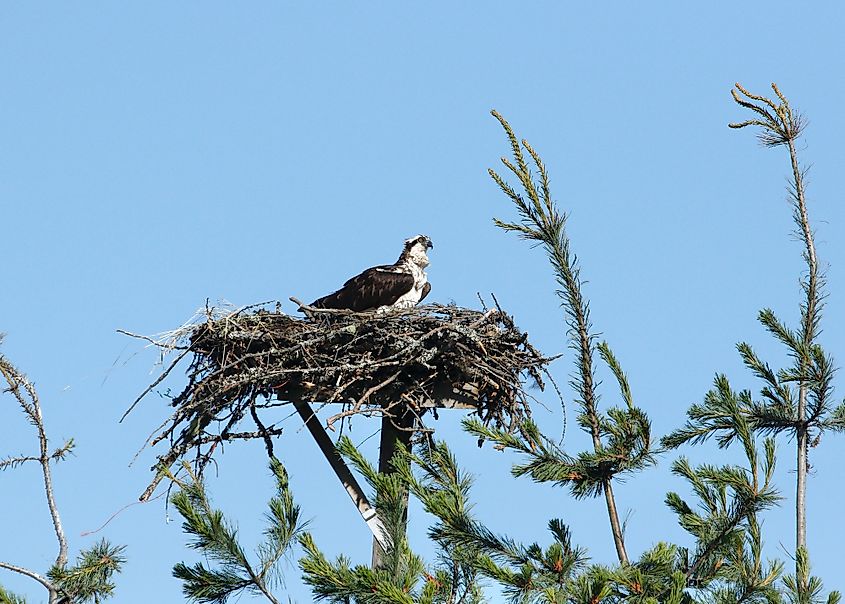
These flat and light-weight nests can be found from anywhere on the ground, to the debris in shallow water, to rooftops of vegetation and thinner branches of trees. Larger water species, including many types of ducks, often establish these nests near the shore or a shallow break in the water, where murky water collects scraps, leaves and twigs. Often built communally and underneath descending willow branches, these may appear as one continuous nest, where more than one litter can fit comfortably.
Ground Nests
Passerines, including the White-crowned Sparrows vigilantly build these unique nests in open spaces, often creating a dome-shaped cover stretching upward, out of longer twigs.
Cupped Nests
Many ground nests can also be cupped nests, among the following varieties of cup-shaped nests.
Adherent
Swifts and some swallows, use their own saliva, mud, or both, to attach these cup-shaped nests on vertical structures, including tree trunks. Some are also lucky to find the adhesive tree sap in an optimal place to nest.
Supported Cupped Nests
Passerines and hummingbirds build these cupped nests in the crotch of the tree trunk, fully relying on the support of the sturdy branch underneath.
Suspended Cupped Nests
The bottoms of these cupped nests hang freely in the air, while the support comes from either the sides, the rims, or from both.
Pensile
Kinglets and vireos mode these stiff nests supported only by the rims and sides, in between branches or structures, such as the water pipe and the house wall.
Pendulous
Most commonly made by orioles, these suspended nests may only be attached by one point at their rim due to their flexibility. The materials include fresh and dried grasses, while the deep interior still ensures protection despite their lightness.
Colonies of up to 60 Baya Weavers, nest in pairs near fresh water and open ground, in these upside-down flask-looking suspended nests, with a long narrow tube for entrance on the side. To complete the nest, each pair makes up to 500 trips, cutting off 30-60cm long top notches from tall grasses at a time for their new home, which stays green at first, but turns light brown when the grass dries.
Cavity Nests
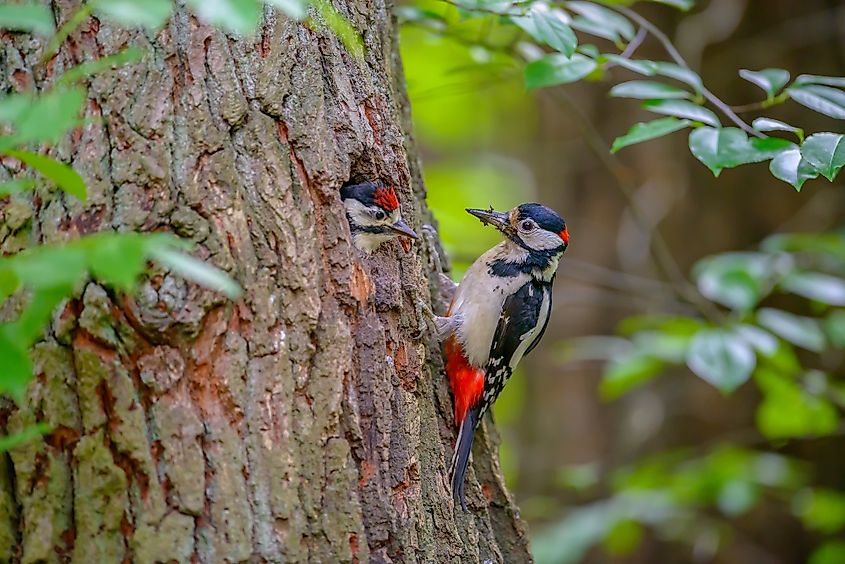
Certain owls, passerines, parrots, and some waterfowl all prefer cavity nests. Known as the primary cavity nesters, woodpeckers are most commonly sighted constructing these kinds of nests. Other bird species later take shelter there as well, as secondary cavity nesters.
Burrow Nests
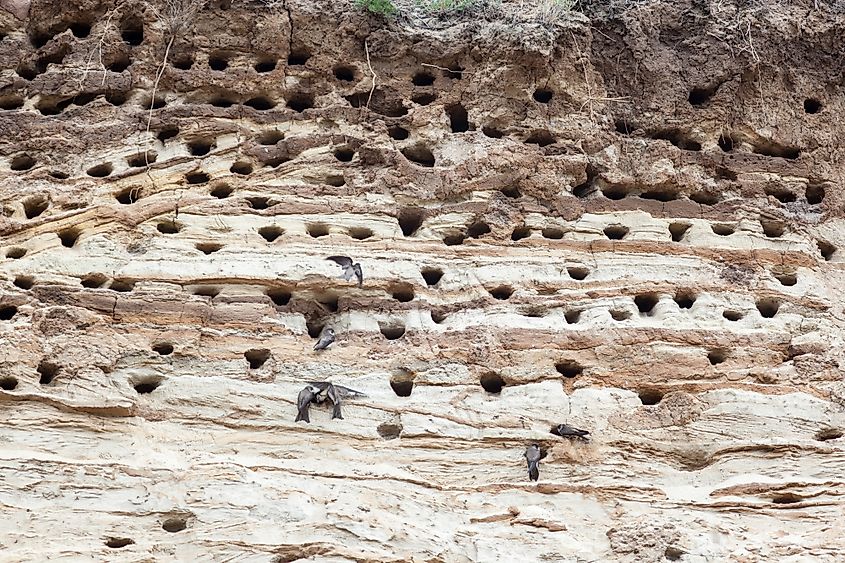
Burrow nests of sand martins. Image credit: Vishnevskiy Vasily/Shutterstock.com
Bank Swallows and Belted Kingfishers among other smaller birds, make holes in various materials, including riverbanks, cliffsides, etc. These nests are good for keeping the eggs at an optimal temperature for hatching, protection from the wind, and masking from predators, while the tree canopy also creates additional security. The less dexterous Burrowing Owls are known to use the burrow nests built by others.
Communal Nesting
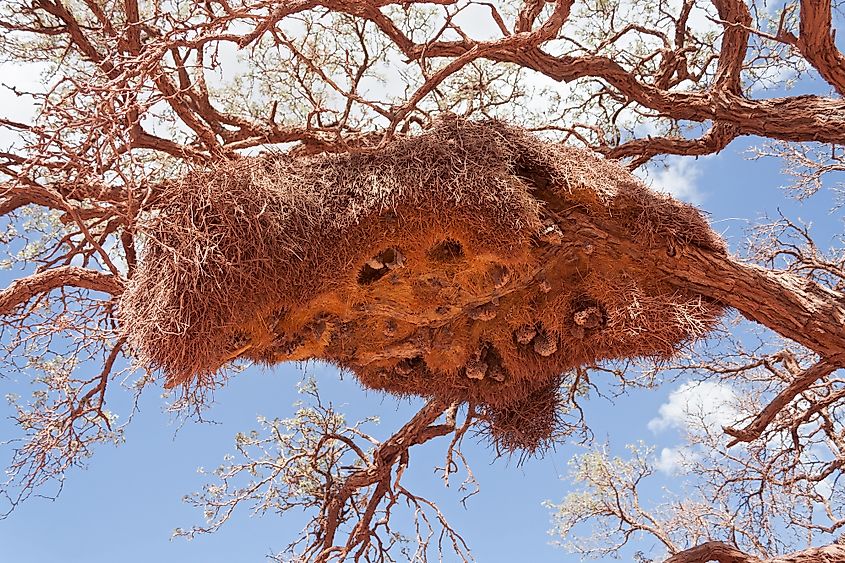
Burrow nests are optimal for species like Bank Swallows who nest in extremely large colonies of 5 to up to 3000 pairs, and employ the tunnel system, whereas each burrow leads to the next within the hills of riverbanks, streams and even ocean coasts. Although some old burrows are reused by new inhabitants, new burrows are dug each year, as water affects the durability and evolves the appearance of the fibrous surface composed of sandy soils and clay. More frequently reused by males, reusing old burrows is still uncommon, and may lead to infestation by fleas.
Infestation Problems
Just like other animals, all avian representatives suffer from mites, although the extent is largely determined by the temperature and the climate. 2500 different species or 40 families of blood-feeding mites divide their preferences whether to take hostage of the feathery birds, or the nests, finding the temperatures suitable for their own breeding needs.
Soft ticks are also temporary nest parasites that birds must endure, while hard ticks are picked up from grasses accidentally. Other types of mites are mutual co-dwellers of the nest, helping to clean it by feeding on the old dermal detritus. Some species of mites actually prefer other blood-sucking mites who live comfortably in the nest.
Detrimental to the reproductive prowess of the bird, the blood-feeding nest mites stunt the development and can even kill the newborns. Because of mite infection early on, some bird species may never grow to their full capacities, while others, show low hatching success in their reproductive years. A unique case showing a positive correlation between the number of mites and the number of chicks who began developing feathers (fledging), suggests that healthy newborns will thrive regardless of their succulent appearance to more mites.











